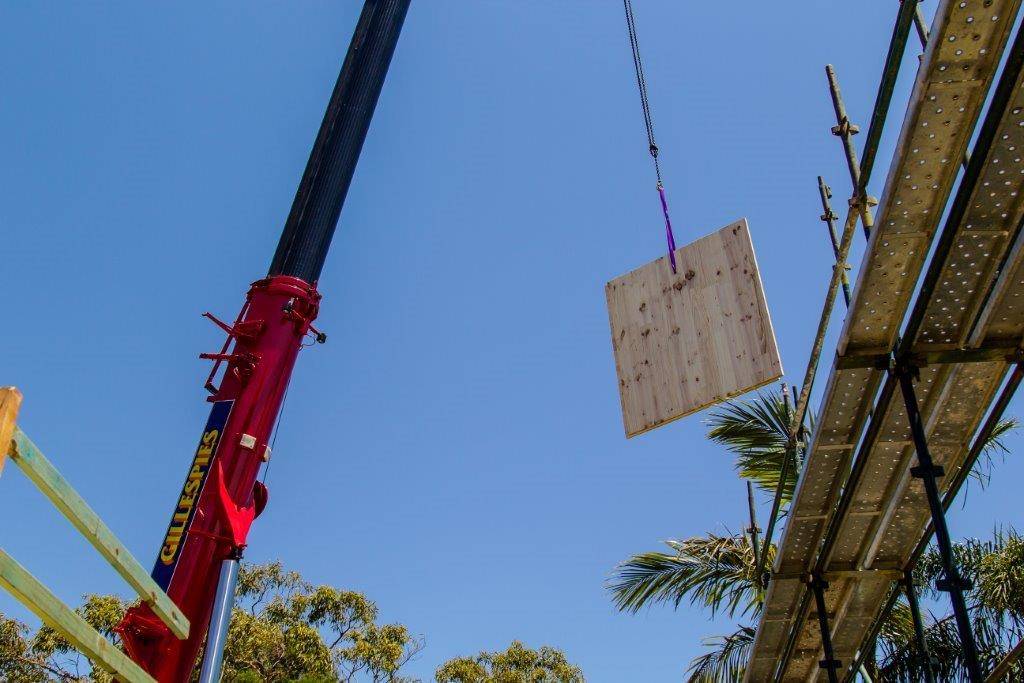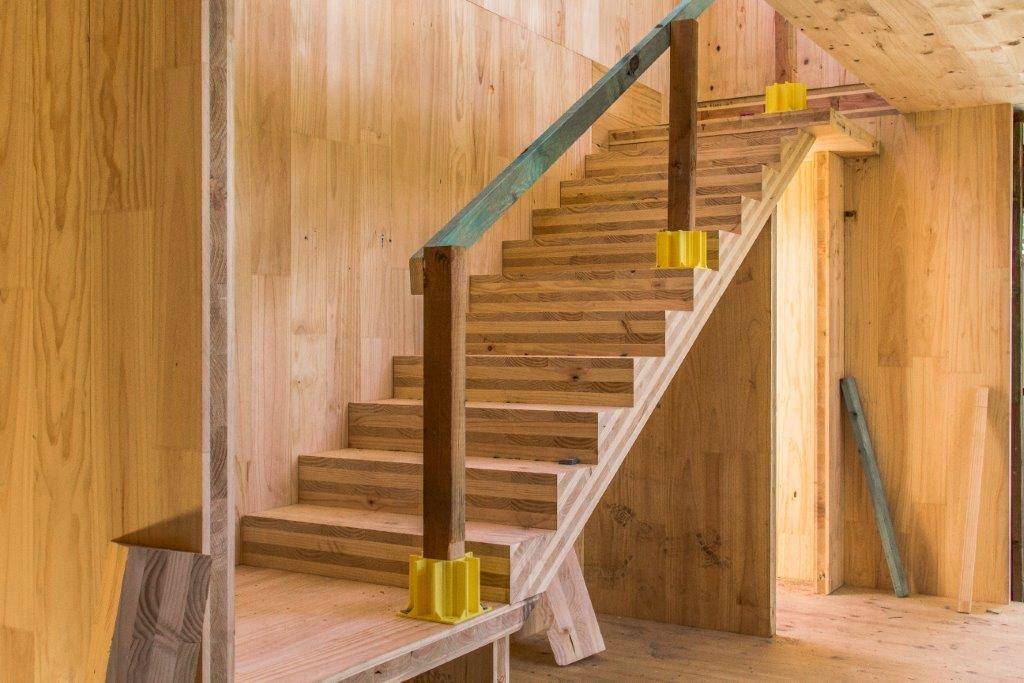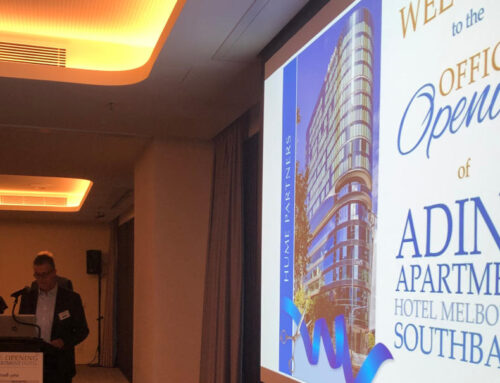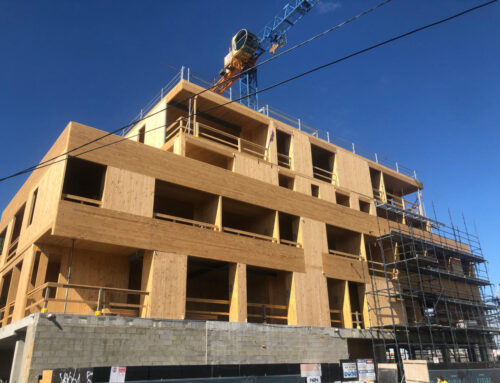Late last year we completed the design for a two-storey residential Cross Laminated Timber (CLT) building on the NSW central coast. The client was an inspiring owner-builder who loved the idea of CLT. He saw that CLT also simplified the build process, allowing him to take on much more of the building work himself.
Now that the project has been completed, here a few things we learned from the process:
1. Believe the hype – CLT is really fast to build with.
Our design combined a CLT structure with a non-concrete foundation system. The foundation was installed in a day, and made the build even faster. The whole structure was up in 5 days. Apparently, a steady stream of neighbours’ cars slowed past the site, trying to work out where the new house on their street had suddenly appeared from. However, the client did report that the timing of the glazing installation did not work to the schedule, which could have allowed him to reach lock-up within a week.
Lesson: If you want to exploit the full benefits of CLT’s efficiencies, be prepared to do a lot of work in the early stages of project planning to maximise the integration with other trades and contractors.
2. CLT is really quiet to build with.
It is eerie to see construction progress at pace with little more than the odd buzz from a hand drill punctuating the serenity. This fact, coupled with CLT’s speed and lack of site waste, makes it a very low-impact way to build. This makes CLT a real blessing for quiet suburban streets.
Lesson: Build with CLT and your neighbours will love you.
3. With CLT you can “stage” the works to move in faster.
CLT gives homeowners the option to rapidly get to lock-up and move in with a minimum of work on the internal finishes. On this project, the owner chose to do a lot of the internal work himself. Because of this, he was able to live in the house as he slowly chipped away at his DIY project list. Other clients have decided to build their holiday house from CLT with a bare bones fit-out from IKEA, with the aim of upgrading the internals in a few years time once they had saved up a bit more money.
Lesson: CLT design gives clients greater flexibility. Some things to remember with this approach:
-
-
The dimensions for any additional finishes have to be accounted for in the original architectural designs (for example, screeds on floors or plastering walls). Again, planning is key.
-
Australian produced CLT is made from pine and will change colour over time if exposed to light. Therefore,if you are choosing to leave the CLT exposed for a period of time, be careful of rug shadows on the floor and picture frame silhouettes.
-
4. The finished structure is stronger than the sum of its parts.
This is a good thing once the structure is complete, but can cause some headaches during the erection process. Cantilevered sections and large spans can develop deflections during construction, before the building has developed its full stiffness. Issues can then arise fitting subsequent panels due to CLT’s extreme accuracy.
Lesson: Even on simple projects, the builder and the structural engineer should meet and go through the erection plan to identify and mitigate tolerance risks in the erection process.
5. CLT buildings provide wonderful internal environments.
This one is harder to pin down – a CLT building has a certain je ne sais quoi. It could be the feel of a CLT building – a sense of monolithic solidity that normally only comes with a concrete building. It could be the timber look appealing to our inherent biophilia. Or it could be the CNC produced precision eliciting a sense of order and exactitude. Or perhaps it’s something else entirely.
Lesson: CLT’s advantages aren’t just its sustainability or in the simplified construction process. Finished CLT buildings make for fantastic internal spaces.

See Australian CLT House (NSW) for more about this project, including a time-lapse video of the construction.






